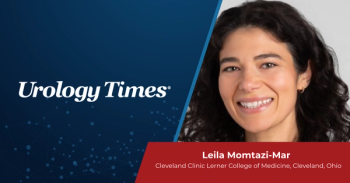
Mitigating the effects of social determinants of health on patients with OAB
"Overactive bladder symptoms have been shown to be influenced by these other areas in their life that can create a lot of stress and problems," says Raveen Syan, MD, FPMRS.
In this video, Raveen Syan, MD, FPMRS, discusses social determinants of health and overactive bladder and how to better treat underserved patient populations. Syan is an assistant professor in clinical urology at the University of Miami Desai Sethi Urology Institute in Miami, Florida.
Transcription:
Social determinants of health is a very important factor that we're starting to investigate more. Basically, social determinants of health are the conditions or the environment where people live—where they're born, live, play, work, worship—everything that influences their day-to-day lifestyle. Another group examined social determinants of health in minority women. About a third were White, a third were Black and a third were Hispanic. When they controlled for all variables—site, age, race, BMI, parity, prior surgery—they showed that having worse overactive bladder symptoms was associated with reporting worse food insecurity, financial strain, difficulty finding or keeping employment, and difficulty concentrating. So, overactive bladder symptoms have been shown to be influenced by these other areas in their life that can create a lot of stress and problems. In our study, we asked, similarly, about any unmet health-related social needs in the various domains. What we found was Black women were significantly more likely to report barriers or unmet social health-related needs and safety and paying for their utility services. And among Hispanic women, education and transportation were major impacts. When we did a focus group trying to dive a little bit deeper into how these things impact their care, Hispanic women reported, "when you're short on money, you just have to pay what's necessary." So you just don't have the ability to put money toward receiving care, which can be costly. Another patient stated, "I limit myself to what I can do and I let go of the rest." So basic needs takes priority over these other medical issues. It's not that they're not having significant bother and problems; they just literally can't afford to focus on it. "I had to cancel all my specialists because I didn't have a way of paying for it." And that really impacted her life during that time period where she had limited funds. So what do we need to do next? As we start to understand and think about other factors that influence receiving care for urinary incontinence, we need to improve access to care and provide education. Mobile clinics, as I mentioned before, are an important link between clinical and community settings. This allows us to address medical and social determinants of health; we can tackle health issues on a community-wide level. This is the game changer vehicle that we utilize at the University of Miami, which again, as I mentioned, goes out to the underserved communities 2 to 3 times a week and is an educational resource. It provides awareness of where to seek care, and we can even do some basic lab testing and interventions in this vehicle. We need to listen to patients to understand what are their barriers to care, so we need to implement qualitative methodology. This includes semi structured interviews, focus groups, and ethnography. Patient-centered and community-engaged approaches are key to creating equity in the care we deliver and outcomes we achieve. And again, this is courtesy of Dr. [Yaw] Nyame, who does fantastic work in this field. We need to engage with our community partners; we need to treat them as researchers and our partners. We develop partnerships and advocate for researchers in the community. And we design and conduct research studies. When we engage with community partners, we can develop reciprocal relationships with these leaders in the communities—we can learn from them just as much as they learn from us. And by creating this partnership, we allow there to be transparency, honesty, and most importantly, trust. We can address address the concern patients may have with trusting doctors. As clinicians, we can develop research collaborations with community partners, we can support community-based medical efforts, and most importantly, we need to fund community-based efforts and research.
This transcription was edited for clarity.
Newsletter
Stay current with the latest urology news and practice-changing insights — sign up now for the essential updates every urologist needs.


















